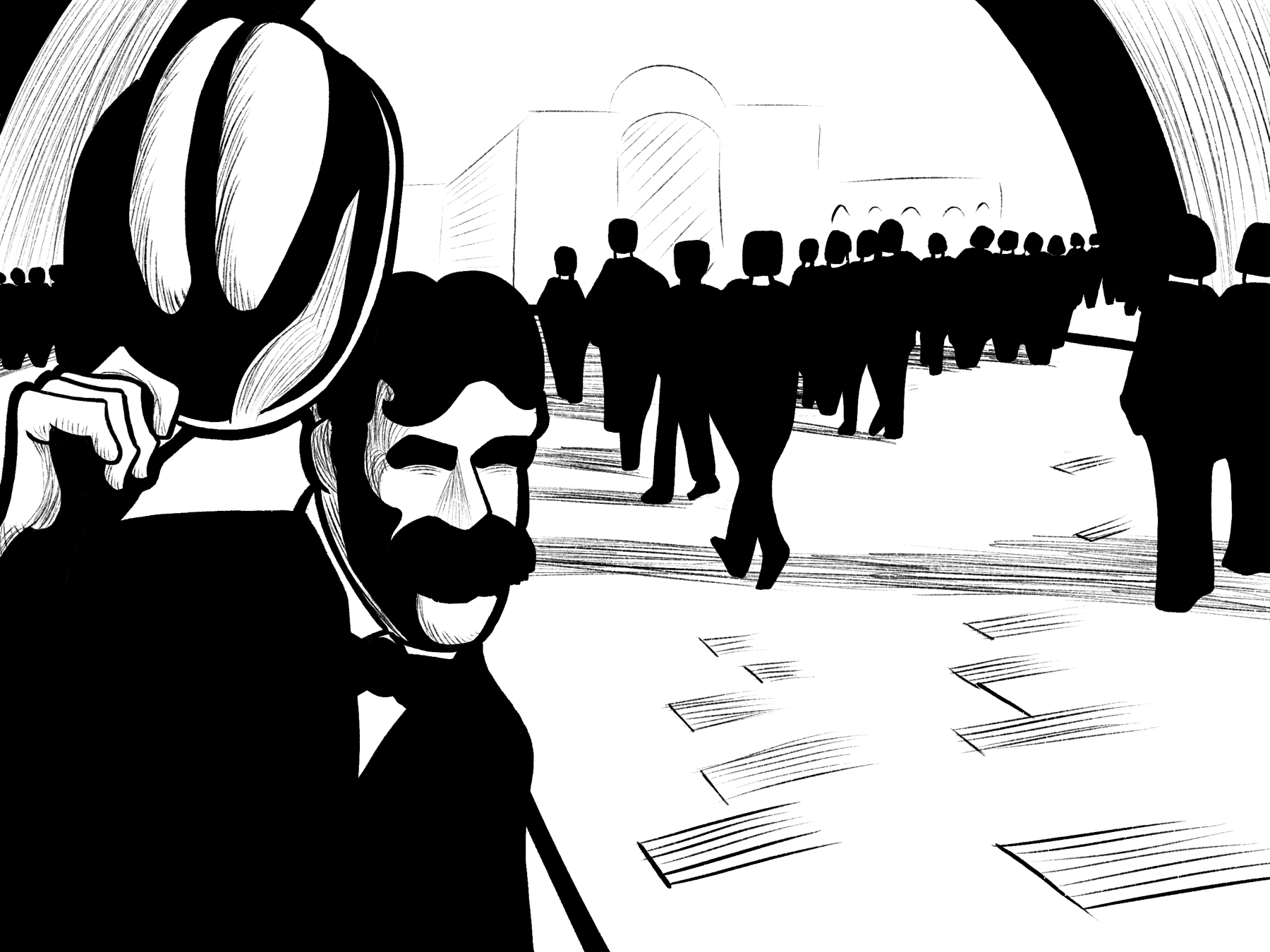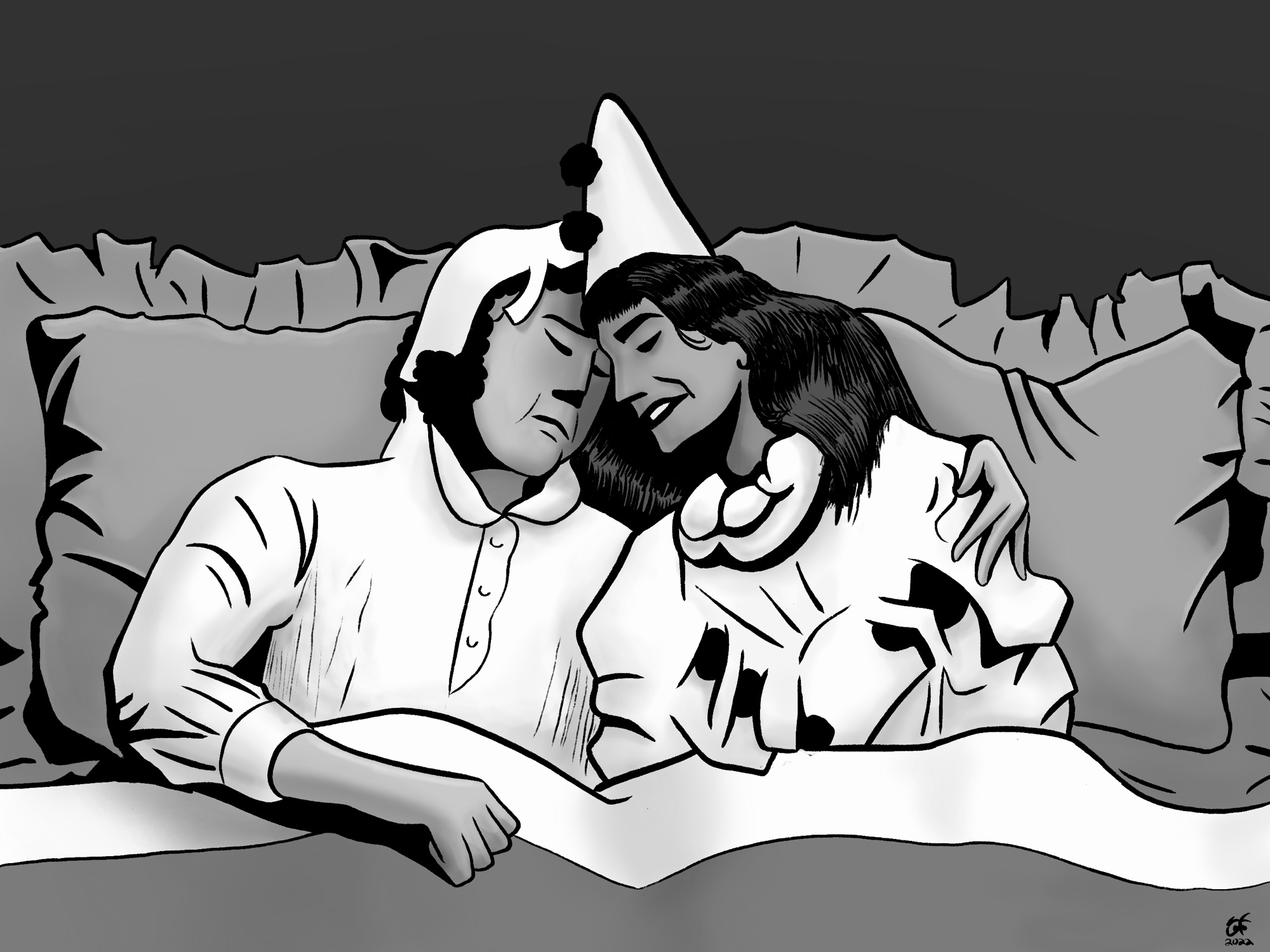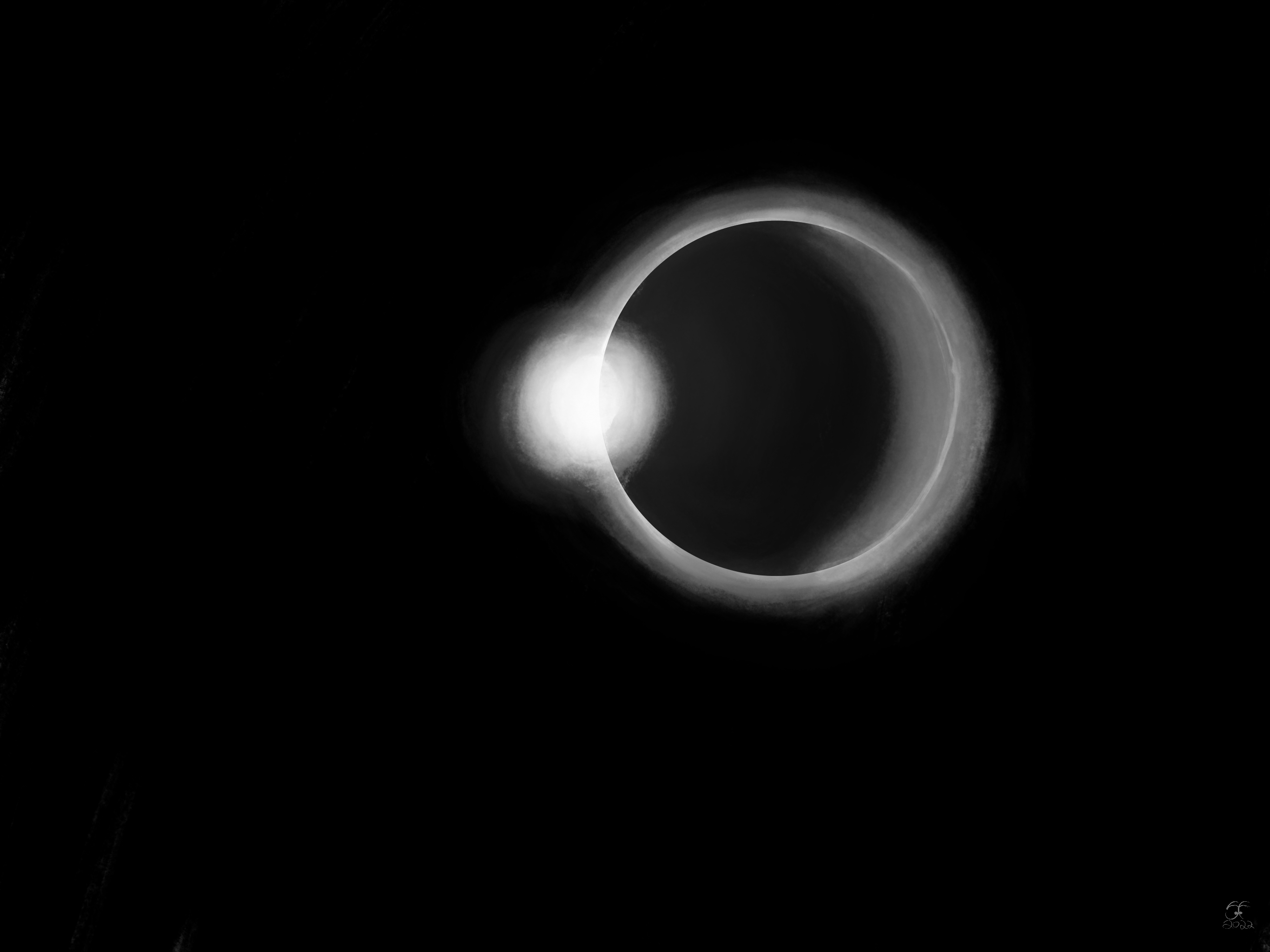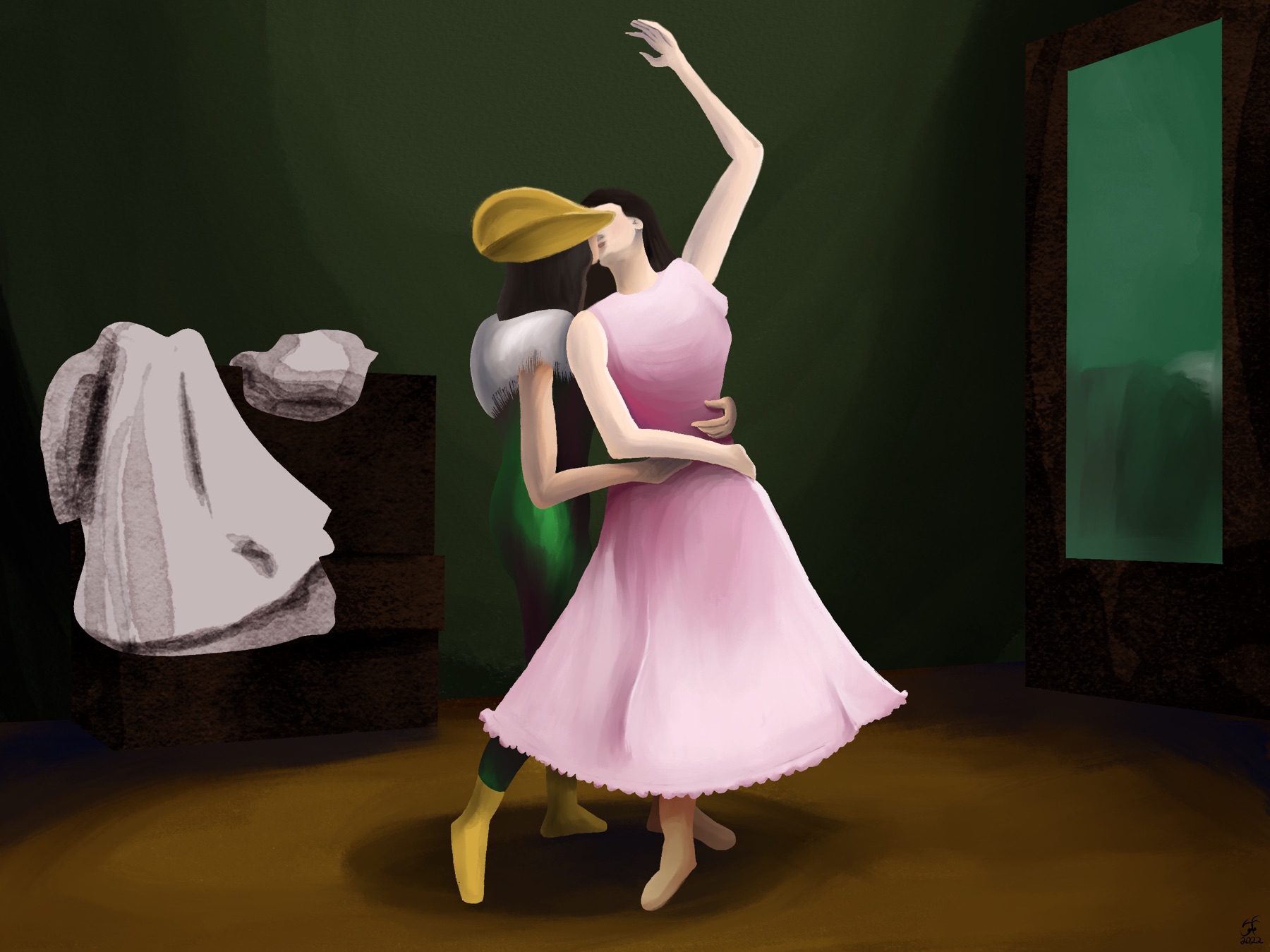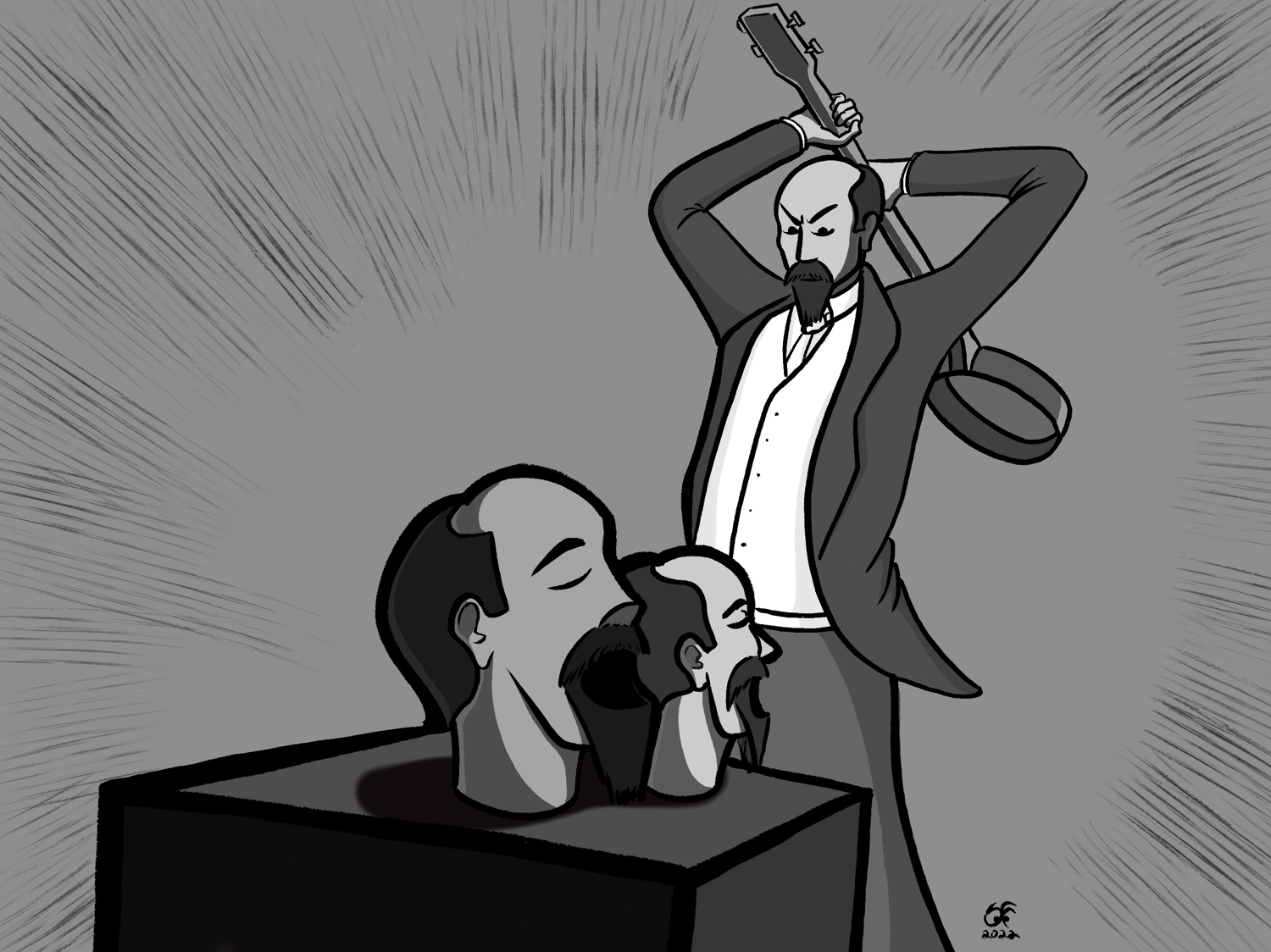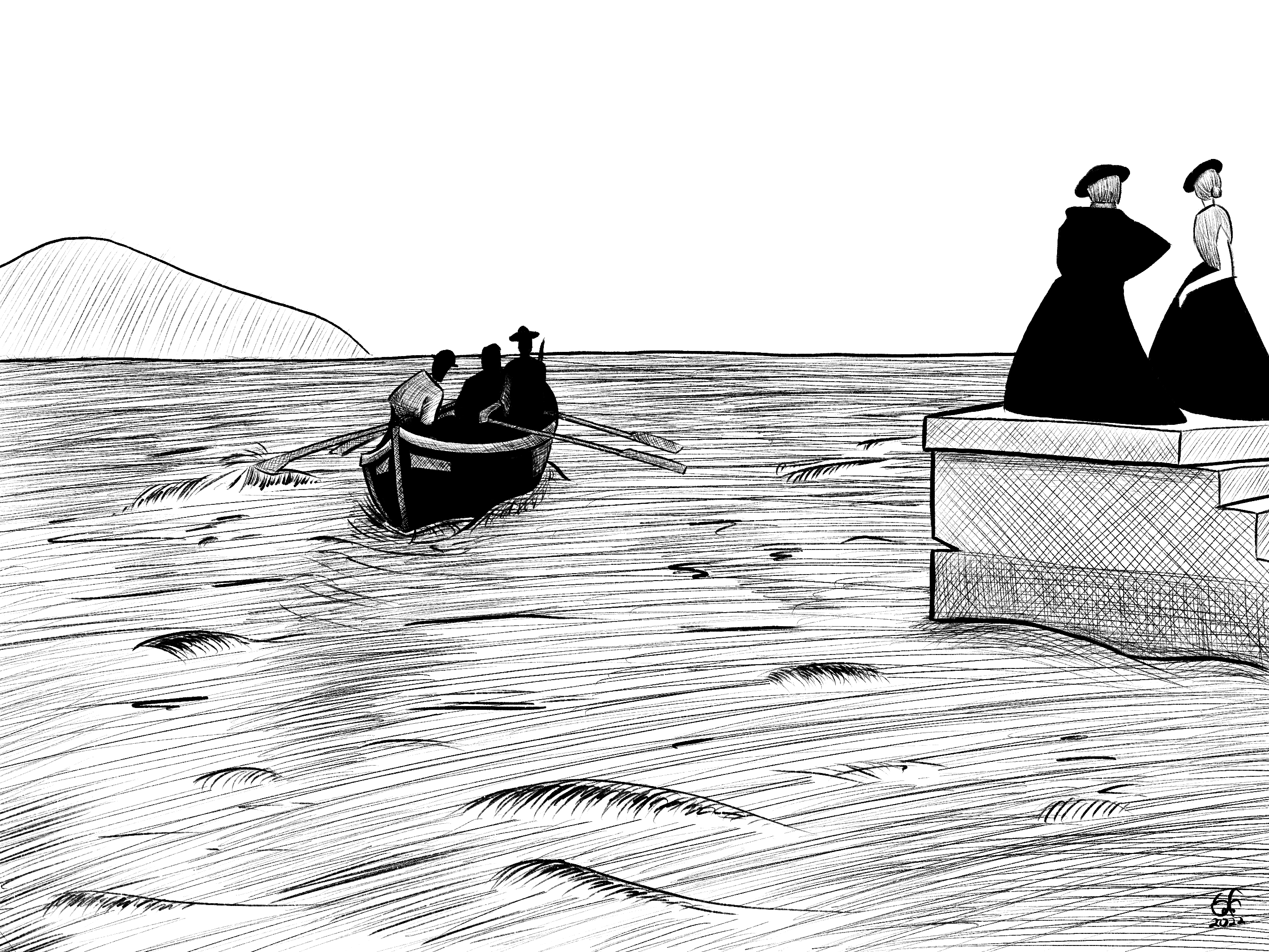Shot using the Cinematograph of his own invention, this one scene short film features intrepid sailors watched over by the relatives of Lumière as they row boldly out to the seas.
The excitement ramps up in the second act as the sailors pass beyond the jetty only to find themselves immediately hit by the angry sea. We wonder how they will handle this sudden eruption of nature’s fury.
Then, in the final seconds of the film, we see the boat desperately trying to turn back to shore while being pummelled by some of the biggest waves ever captured on film that year.
Then it suddenly ends, the fate of the sailors left to the imagination.
With this abrupt ending, the film asks us to contemplate what it means to take on more than we can handle.
Fun Fact!
The Lumière brothers were the first to have a paid public screening of a projected film, basically inventing The Cinema, but then they later decided that movies weren’t going anywhere and so they quit making them.
See more from my study of The History of Cinema.

